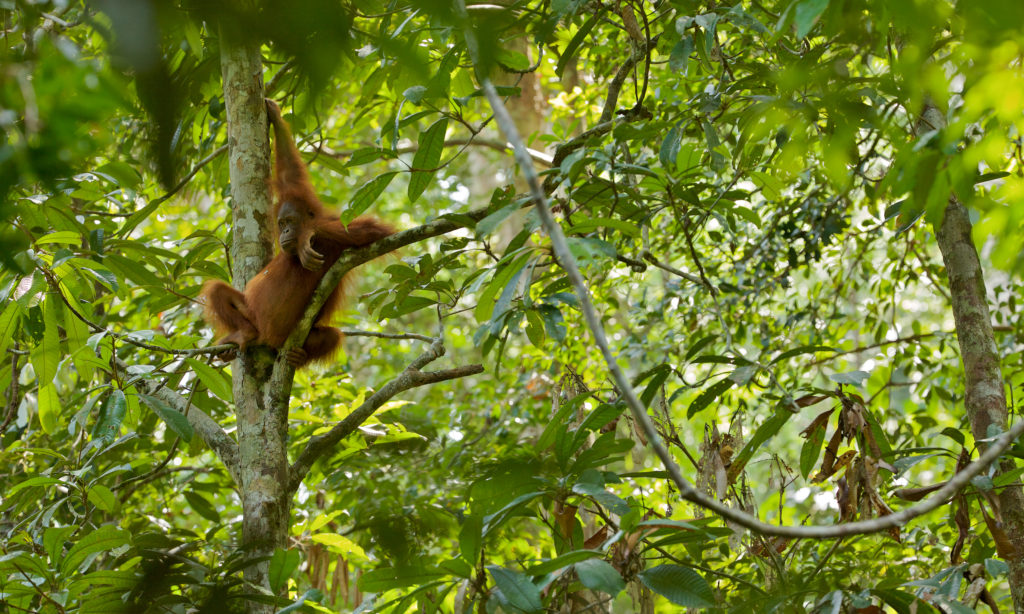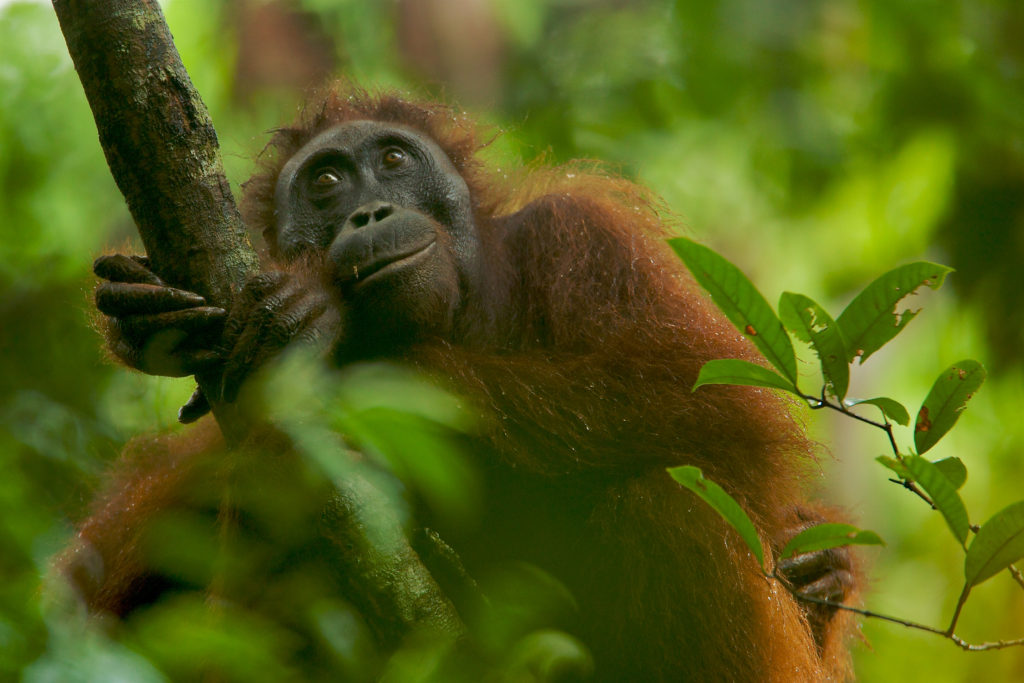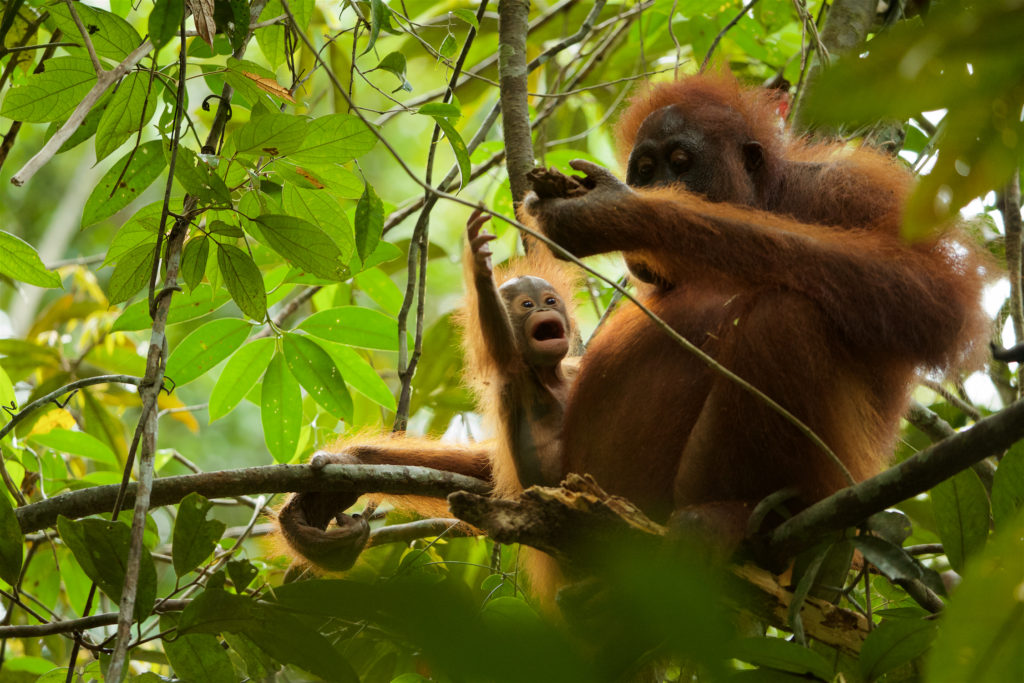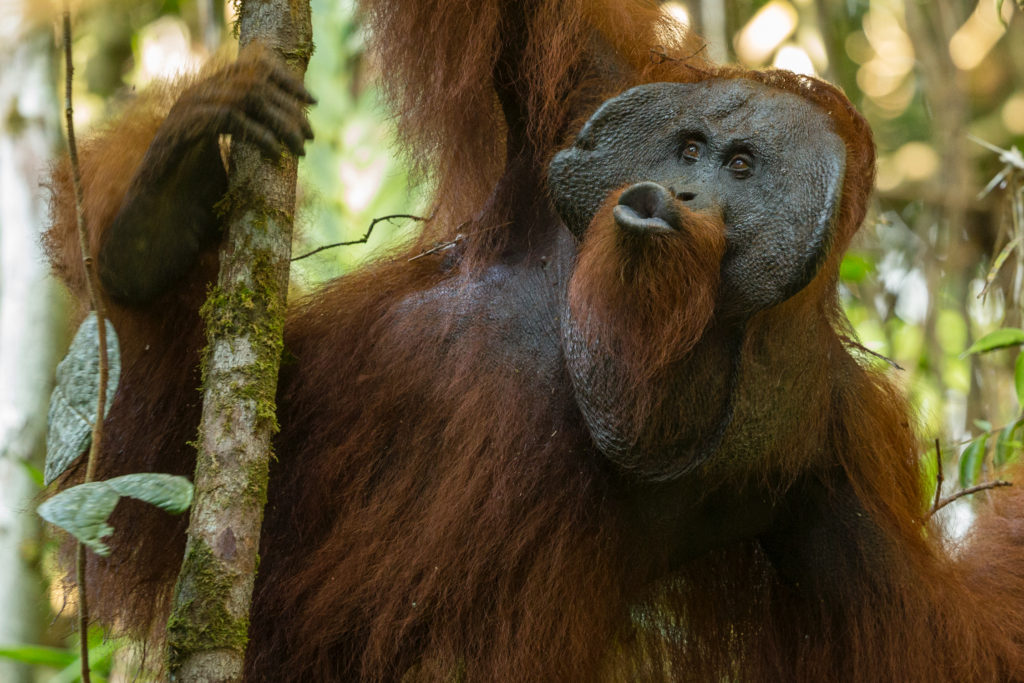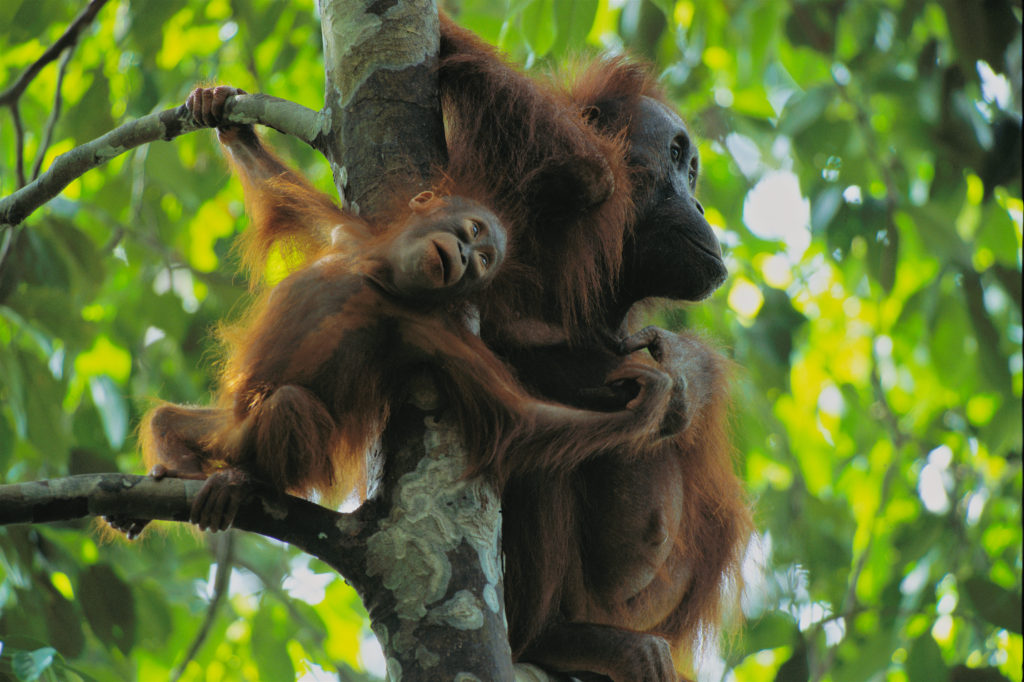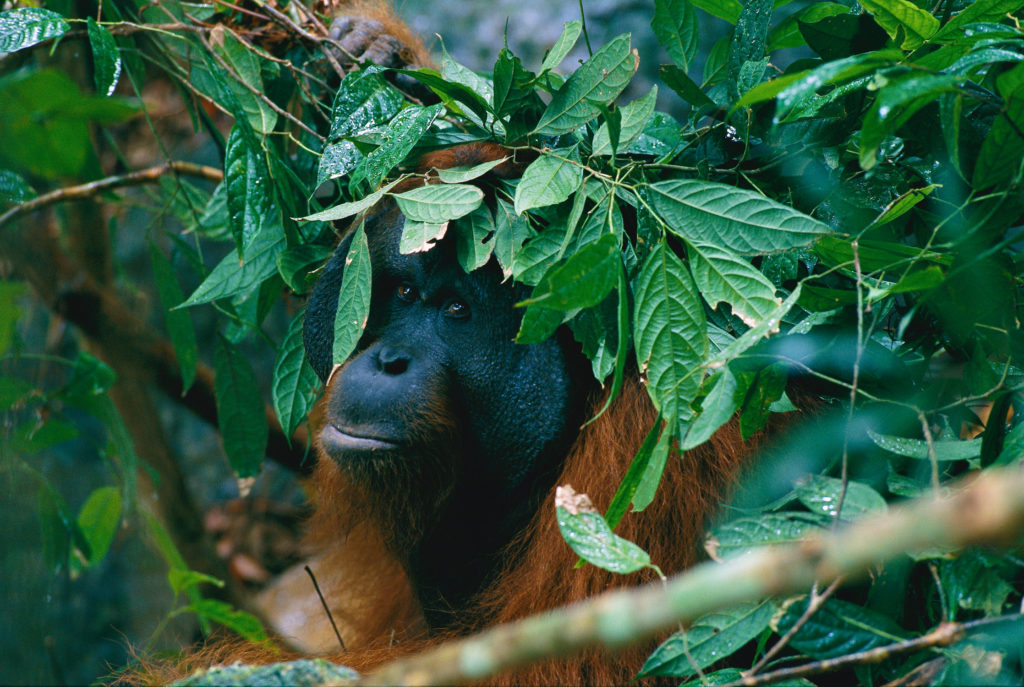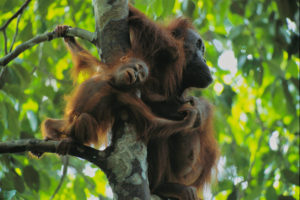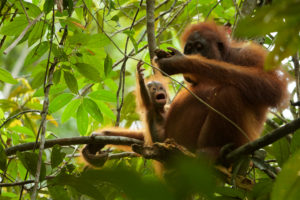
We are working to protect wild orangutans and their forest habitat so that orangutan populations can continue to survive and thrive in the forests of Borneo. Like humans, wild orangutans have their own cultural knowledge that is passed down from generation to generation. Young orangutans spend the first eight to ten years of their lives learning everything they need to survive from both their mothers and from other orangutans they encounter – they learn what to eat and how to eat it, where the fruit trees are, how to make nests and umbrellas, and many other things. Only by protecting wild orangutans can we save the species with that cultural knowledge intact. That’s why our focus is on habitat protection for wild orangutans and on conservation education to reduce orangutan-human conflict.
Only wild orangutans have intact cultural knowledge of how to live in their forest. I’m on a mission to tell this story through my photography and filming.”
Tim Laman, PhD
We have been working for 25 years to study and conserve wild orangutans in their natural habitat in Gunung Palung. Now through the power of social media, we are building a community of like-minded people to join us in saving this critically important population.”
Cheryl Knott, PhD
Why Gunung Palung National Park?
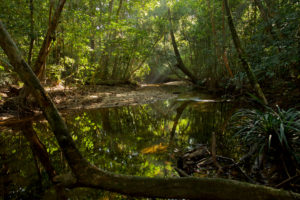
Gunung Palung National Park (GPNP), located in West Kalimantan, Indonesia (Borneo) is a 108,000 hectare (1,080 km2) protected area that houses nine ecosystem types. We have been involved in scientific research and conservation in the area for over 25 years, chiefly because GPNP is home to one of the most important intact blocks of orangutan habitat remaining in the world!
Made up of tropical moist lowland, peat swamp and montane forests, GPNP hosts a myriad of other endangered and endemic species from clouded leopards to helmeted hornbills. The Gunung Palung landscape also plays a major role in buffering against climate change for the region, with deep peat forests serving as a carbon sink and mitigating the flooding and saltwater intrusion that damages coastal farmlands.
